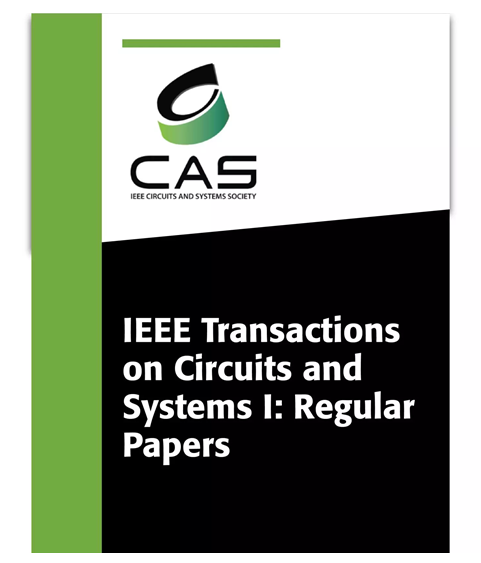NoCiPUF: NoC-Based Intrinsic PUF for MPSoC Authentication
IF 5.2
1区 工程技术
Q1 ENGINEERING, ELECTRICAL & ELECTRONIC
IEEE Transactions on Circuits and Systems I: Regular Papers
Pub Date : 2025-04-16
DOI:10.1109/TCSI.2025.3559419
引用次数: 0
Abstract
Modern Multi-Processor-Systems-on-Chips (MPSoCs) use Network-on-Chips (NoCs) as a scalable and efficient communication fabric. The applications running on these devices rely on frequent communication with central database servers, which are vulnerable to impersonation attacks by adversarial clones. We propose NoCiPUF, a novel NoC-based intrinsic Physically-Unclonable-Function (PUF) framework for MPSoCs authentication. We re-use the circuit switched nature of NoC with path-pairs as challenges to obtain secret responses, collectively called challenge-response-pairs (CRPs). Due to the random nature of manufacturing variations, equal hop paths exhibit unequal delays. We leverage the delay differences of flits traversing in equal-hop paths to generate unique responses. NoCiPUF is fully-synthesizable and readily scalable as it requires changes only at the behavioral level. To counter Machine-Learning (ML)-based modeling attacks on PUFs, we provide a comprehensive technique and reduce the prediction accuracy to ~52%. NoCiPUF framework incurs low area (0.76%) and power (1.14%) overheads and has no impact on NoC performance in normal mode due to independent authentication mode. Obtained responses have near-ideal PUF metrics and are verified against the NIST randomness test suite. This scheme offers high number of CRPs in larger NoC networks (>0.74 million CRPs inNoCiPUF:基于noc的MPSoC内部PUF认证
现代多处理器片上系统(mpsoc)使用片上网络(noc)作为可扩展和高效的通信结构。在这些设备上运行的应用程序依赖于与中央数据库服务器的频繁通信,而中央数据库服务器很容易受到敌对克隆的模拟攻击。我们提出了一种新的基于物理不可克隆功能(PUF)的基于物理不可克隆功能(NoCiPUF)的mpsoc认证框架。我们重新利用NoC的电路交换特性,将路径对作为挑战来获得秘密响应,统称为挑战-响应对(CRPs)。由于制造变化的随机性,相等的跳跃路径表现出不等的延迟。我们利用在等跳路径中穿越的飞行的延迟差异来生成唯一的响应。NoCiPUF是完全可合成的,并且易于扩展,因为它只需要在行为级别上进行更改。为了对抗基于机器学习(ML)的puf建模攻击,我们提供了一种综合技术,并将预测精度降低到~52%。NoCiPUF框架的面积开销(0.76%)和功耗开销(1.14%)较低,并且由于采用独立认证模式,在正常模式下对NoC性能没有影响。获得的响应具有接近理想的PUF度量,并根据NIST随机测试套件进行了验证。该方案在较大的NoC网络中提供了大量的crp(在$5 \ × 5$ mesh中提供了bb0.74万个crp),证明了其可扩展性。
本文章由计算机程序翻译,如有差异,请以英文原文为准。
求助全文
约1分钟内获得全文
求助全文
来源期刊
CiteScore
9.80
自引率
11.80%
发文量
441
审稿时长
2 months
期刊介绍:
TCAS I publishes regular papers in the field specified by the theory, analysis, design, and practical implementations of circuits, and the application of circuit techniques to systems and to signal processing. Included is the whole spectrum from basic scientific theory to industrial applications. The field of interest covered includes: - Circuits: Analog, Digital and Mixed Signal Circuits and Systems - Nonlinear Circuits and Systems, Integrated Sensors, MEMS and Systems on Chip, Nanoscale Circuits and Systems, Optoelectronic - Circuits and Systems, Power Electronics and Systems - Software for Analog-and-Logic Circuits and Systems - Control aspects of Circuits and Systems.

 求助内容:
求助内容: 应助结果提醒方式:
应助结果提醒方式:


